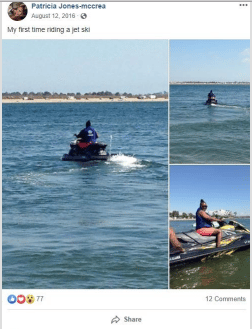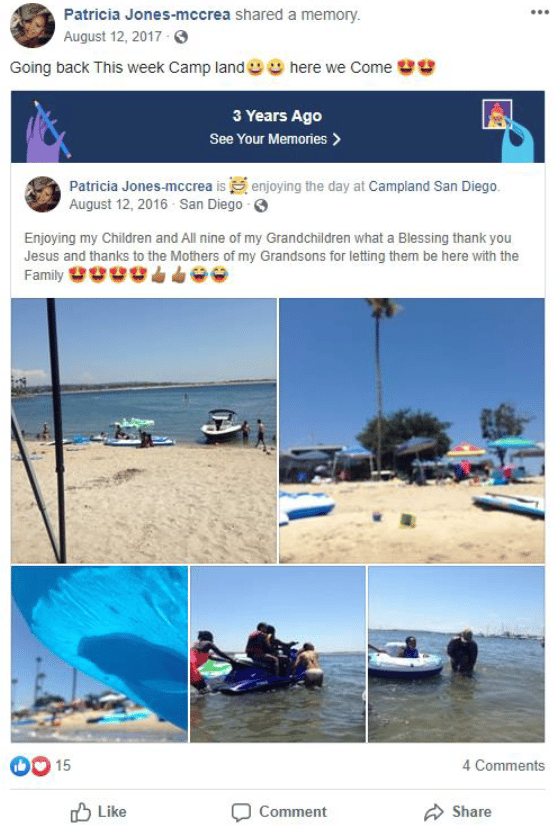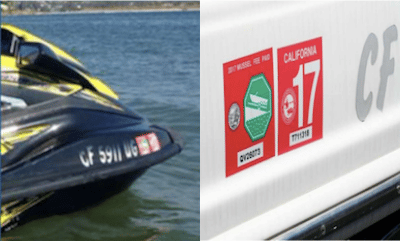To use social media photos as evidence in a court case, they must be properly obtained, preserved, and verified as presenting authentic and truthful information. One question that can stump many legal teams is how to verify the date of photos posted on social media. Dating a photo doesn’t just mean identifying when it was posted; litigators must take several specific steps to establish when the events portrayed actually occurred.
5 Ways to Date Social Media Photos
How do you authenticate a photo to use as evidence? Hint: it’s never as simple as just taking a screenshot. For example, say you’d like to argue that a person was present in a certain restaurant on a certain date. You have a photo posted publicly to Facebook on that date that clearly shows that person in that restaurant. Case closed? Definitely not.
The information that Facebook portrays is not enough to prove the authenticity of the image’s date, location, and authorship. You’ll need to use a multi-faceted approach to authenticate the photo evidence in accordance with the rules for electronic data established by FRE 902(14). Pictures from social media will often only be admissible as evidence if they can be dated using the following five factors.
Image Metadata
The majority of digital cameras and phones create metadata for every photo taken on the device, and specific descriptive information can be added post-production. Metadata is embedded onto the image file and will include characteristics such as creation date and location, copyright information, captions, credits, keywords, and source information. Since most average users will not edit or delete a photo’s metadata, this information is considered authoritative for establishing the time, date, and possibly even geographical location that the picture was taken. The story told by the metadata will take precedence over the one told on social media, since it is considered to provide objective information on the photo’s creation timeline.
EXIF Data
A specific type of metadata, Exchangeable Image File (EXIF) data can contain detailed information on the camera that took a photo, time and date stamps, and GPS location. Because EXIF data adds to the size of an image file and can present privacy concerns in the eyes of social media platforms, most major platforms automatically remove EXIF data when an image file is uploaded. If the EXIF data has been removed from a photo (which will usually be the case if your evidence is from social media)- don’t panic. The robust information presented by profile analysis can still help you date a photo.
Social Media Habits
Identifying a pattern in a person’s social media posting habits can help back up your claim that a photo was taken at a certain time. Look through the person’s profile and past posts, and see if you can find concrete examples that show they habitually post photos on or near the date they are taken. Good opportunities for establishing this behavior are events that take place on a verifiable date – like holidays, sporting events, public gatherings (like concerts or social events), and vacations. Does the person consistently post pictures related to these events immediately when they occur? If so, document this behavior and present it as corroborating evidence to verify the date of the photo you’d like to submit as evidence.
Descriptions, Comments, & Tags
The description or comments on a photo published on social media can help you place the photo within a timeline. When analyzing these aspects of the post, look at things like:
- References to time, where the author directly states when the events in the photos took place. Example: “Had so much fun today at the game!”
- Language or hashtags that indicate a photo may have been taken sometime in the past. Example: #TBT (Throwback Thursday) or #FBF (Flashback Friday).
- The accounts of other people tagged in the photo. Can you view their profiles and see if they published similar images that agree with or contradict your supposed timeline?
- Comments on the photo that reference a particular day or time and can help establish when the photo was taken.
Context
Take a look at the person’s social media activity surrounding the photo post in question. Are there any more photos from the same time period that could contain relevant information? Look for references to events, travel, or gatherings that could add weight to your assumed timeline. Looking at the clothing worn across multiple photos in an album can also lend considerable help. Additionally, geotags that place the person in a certain location can also be critical pieces of information. Look out for geotags on all photos from the time period you’re researching, in case the locations can help establish when a photographed event occurred.
And don’t forget – you need to investigate all social media profiles maintained by your subject to present a thorough case. It may not always be easy to track down private accounts or accounts created by the same person but with a different name. In those cases, a professional social media investigator may be your best hope for success in court.
Why is it Important to Date Social Media Photos?
At the surface level, photos posted online can tell a different story than what actually happened. Anyone hoping to submit these photos into evidence must take the appropriate measures to ensure they will be deemed relevant and admissible. When you follow the above five steps to authenticate and date a picture from Facebook, Instagram, Twitter, or another social media channel, your chances of winning your case drastically increase – as we see in the case of McCrea v. Larry.

McCrea v. Larry: The Importance of Accurate Photo Dating
Note that any information or evidence pertaining to this case is now a matter of public record and/or is being shared with the express consent of the retaining attorney.
The plaintiff in McCrea v. Larry (Los Angeles Superior Court Case #BC643613) claimed to have suffered an injury to her neck, back, and left hip after an incident involving the defendant. The defense entered into evidence a photo and video from Facebook – posted after the alleged injury was said to have occurred – that showed the plaintiff riding a jet-ski. According to the defense, if the plaintiff had indeed sustained such serious injuries, she should have been unable to happily take a ride on a jet ski in the months following. The plaintiff agreed that she was unable to ride a jet-ski, that in fact riding jet-skis was a family pastime that she greatly missed, and that the photo in question had been taken before the injury occurred, and she had simply posted to social media at a later date.
Given the Plaintiff’s assertions, if the defense was unable to prove-up the date the photos and videos were taken, they would be unable to use the content as evidence, and a significant portion of their case would be unusable. As such, they retained Joseph Jones of Bosco Legal Services, who is a Certified Social Media Intelligence Expert, to analyze the postings in question.
Unfortunately, there was no EXIF data attached to the photo that could provide concrete metadata evidence of the time and date it was taken. (Remember that metadata is oftentimes removed during the social media upload process.) Instead, Joseph and his team turned to language, context, and geotags to analyze the posts in question.
Ultimately, it was determined that the content in question WAS in fact taken on or around the same date it was posted, thus exposing the plaintiff’s statements under oath as untruthful. Let’s take a look at how each technique described in this article was applied to this case, and how the experts were able to prove the jet-ski photos/videos were taken after the incident in this case.
- Language – The caption of the photo was in present tense, and the plaintiff’s replies to comments also indicated the jet ski ride had taken place the day the photo was posted.
Language example of a comment pulled from plaintiff’s Facebook profile on the day in question (McCrea v. Larry case). - Context – The photo was during a time frame when the plaintiff and her family were known to have taken a vacation together, and Facebook metadata showed that comments on the photo were made during that same time frame. Additionally, the photo was geotagged near the vacation destination and the plaintiff had also “checked in” to the same location on the same day the photo was posted.

- Social Media Habits – By looking at the plaintiff’s other social media posts, investigators located evidence that the plaintiff was a habitual user of Facebook and had a tendency to upload photos “in the moment.” Additionally, it was found that when the plaintiff did post older photos, they were generally accompanied by an indication that they were old.
- DMV Record – After examining the content of the photo in question, investigators were able to add another piece of corroborating evidence to their argument: the registration date of the jet-ski. The jet ski’s license tag was clearly visible in one of the photos, and DMV records showed the date of purchase of the jet-ski wasn’t until after the incident.

The evidence described above proved to be sufficient for the defense to verify the date of the photo in court and successfully contradict the plaintiff’s claim that the jet-ski ride had occurred before the injury and ultimately the defense obtained a jury verdict in their favor.
It should be noted that Bosco Legal Services prides itself on being an impartial, disinterested 3rd party investigation agency whose primary focus is obtaining the truth, whatever it may be. As such we regularly work for both Plaintiff and Defense firms on a myriad of cases where social media evidence is at issue.
Challenges & Solutions for Verifying Dates of Social Media Photos
Along with authenticating and creating a foundation for social media content as evidence, correctly dating social media photos can make or break your case. How to locate and present the correct data isn’t as easy as a quick Google search, and novices will find it difficult to identify where and how to search for photo dating information. Those hoping to use social media evidence in court should also keep in mind that the person(s) who complete a social media investigation may need to testify to their methods in court and verify for a judge that they used ethical and appropriate means to obtain said evidence.
The fact is, software services claiming to provide social media data often fall short of court requirements for evidence authentication. And while litigators may be aware of the complicated nature of verifying photos’ authenticity and dates taken, it’s unlikely that most attorneys will have the capacity to conduct a thorough and detailed electronic evidence investigation themselves. That’s why we recommend enlisting the help of a professional social media investigations team. For more information, get in touch with the Bosco Legal team today.





